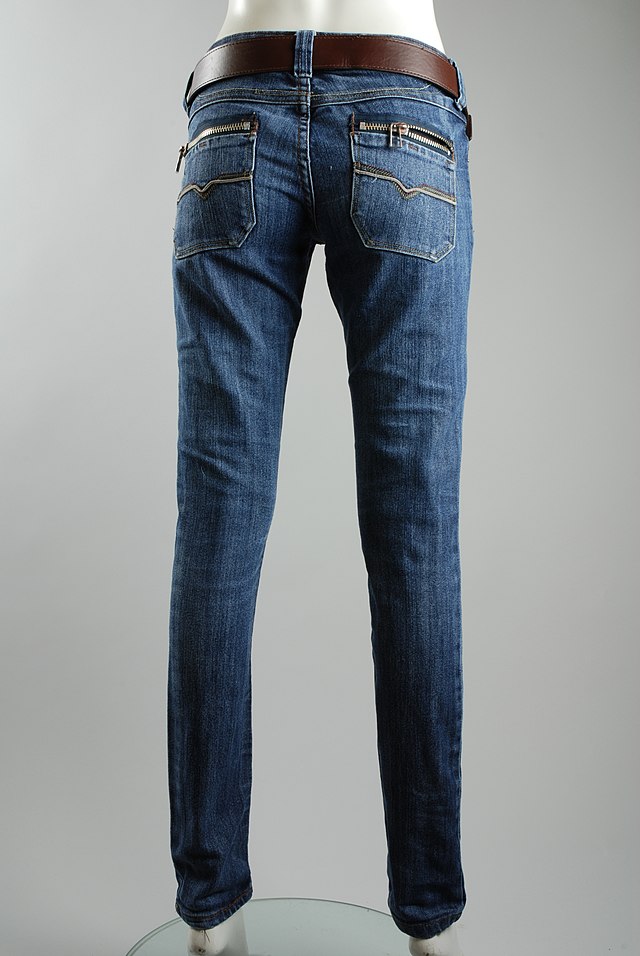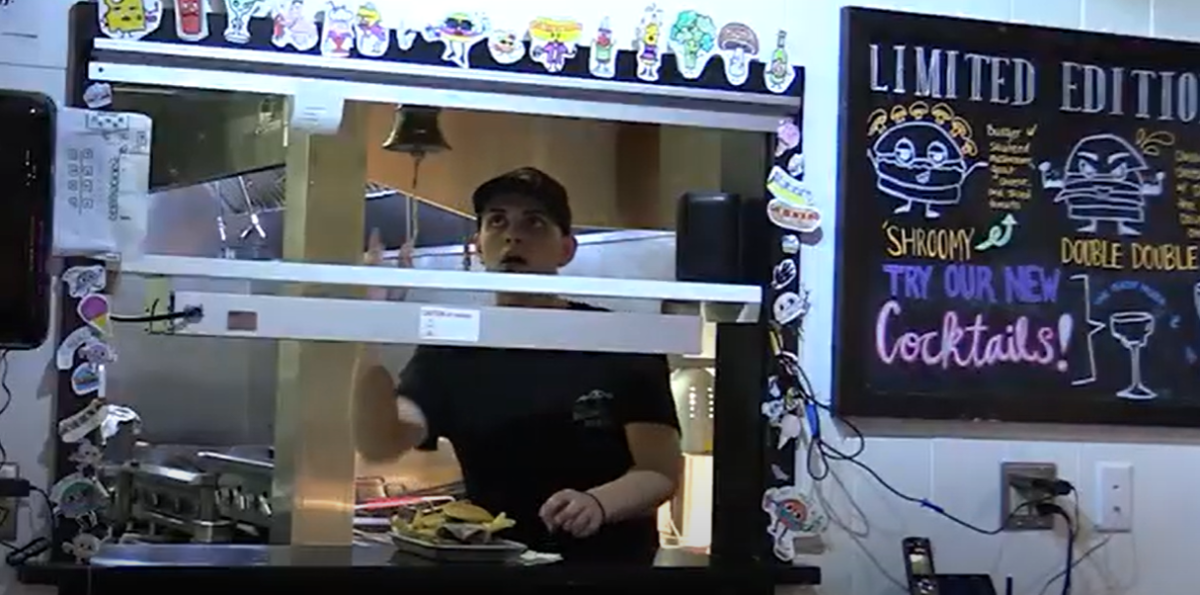
Next to one of Abandoned Building Brewery’s giant steel fermenting tanks sits a home brewer’s glass carboy. This was owner Matthew Tarlecki’s original fermenting vessel which has traveled quite a bit over the past few years, much like Tarlecki.
Tarlecki’s hobby of brewing brought him from an office job in Philadelphia to a 100-year-old abandoned mill, and he has not looked back since.
A Philadelphia native, Tarlecki is no stranger to big manufacturing complexes and how they look when long-forgotten. So when he wanted a name for the drinks being homebrewed in his college house, the namesake of the buildings fit right on the label. Local friends were the first ones at the time to try the latest style of beer made under the Abandoned Building brand.
Tarlecki also volunteered at McKenzie Brew House in Philadelphia, where he saw the process of making and bottling batches firsthand. A few of Tarlecki’s associates started small breweries themselves, so there was little doubt for Tarlecki that pursuing such a dream was possible.
Achieving this, however, meant leaving a career in engineering after years of education and working in an office.
“It was difficult leaving a nine-to-five job, where I went to the office every day,” Tarlecki said.
During a visit with a friend studying at Hampshire College, he discovered that the Pioneer Valley was a great place to start a business. Before long, The Brickyard in Easthampton caught Tarlecki’s eye. Mill buildings were always in the back of his mind, as they would nicely complement the brand name.
With a location picked, it then became a matter of getting funding, according to Tarlecki.
“Since this was the first business I had ventured into, the traditional loan option didn’t really pan out very well so we ended up going with some of my own equity and then we did a few private investors that were interested in the brewery idea,” Tarlecki said.
Tarlecki said the entire Abandoned Building Brewery project had a total budget of around $200,000, and that from the onset, keeping costs down was essential.
The location itself was an actual abandoned space, which meant Tarlecki had a great deal of cleaning up to do. Instead of hiring a crew to move discarded equipment, he relied on a few friends and family to clean and paint the future brewery while the bulk of the budget went toward purchasing the instruments to make the beer.
“All of the brewery equipment was brand new so we put the money where it was going to count,” Tarlecki said. “We can buy or get used free chairs and couches and stuff like that but when it comes down to the beer quality, it was definitely worthwhile.”
As the whole process progressed to a much larger scale, Tarlecki then looked to veterans of the trade for some help.
“The nice thing about brewers is that they’re usually willing to help you out if you have a question about things like that. … Wormtown (Brewery) helped out a lot. The brewers there are really friendly, super knowledgeable,” Tarlecki said.
“You can figure out a lot yourself but it’s nice to know if something you’re going to do has been done before and has worked so you can avoid something that won’t.”
When it came to the ingredients, the lure of Hadley was always in play. Tarlecki visited Valley Malt in Hadley on his initial trips to the area and after some successful tests batches with its product, he knew everything he needed was within easy reach.
For hops, Tarlecki only had to look to his backyard – literally. At his new home in Hadley, Tarlecki said he has about 200 hop plants. That yield helps produce the “Hoppy Valley” (7.6 percent ABV) India Pale Ale style.

For water, the brewery’s location once again proves beneficial. Easthampton has been awarded the best drinking water in the nation multiple years by several organizations, including most recently at the 2015 National Rural Water Association Rally in Washington, D.C.
With all of the pieces finally in place, the brewing began for Easthampton’s first craft brewery last year, with the tasting room opening in April 2014.
But Tarlecki said the first year was expectedly bumpy.
“There were a couple of challenges, mainly trying to get draft accounts,” Tarlecki said. “We didn’t do any bottling right off the bat. In the tasting room we could only give out free samples and growlers to-go.”
After acquiring a farmer-brewery license, on-site sales were allowed. Self-distributing kegs and the eventual bottles were slow-going at first but picked up local steam after advertising bar-to-bar.
“I’d say like 80 percent of our draft is within 20 miles of the brewery,” Tarlecki said.
The new brewery received a lot of attention, as it was featured in several beer festivals statewide, including the American Craft Beer Fest held in Boston. And the styles of beer are as diverse as Tarlecki’s taste.
“I make the beers that I really like to drink,” he said, adding that Belgian and American styles are his focus right now.
Even as a small start-up operation, Abandoned Building Brewery is testing unproven waters. One such unique endeavor is whiskey and rum barrel-aged beers. After receiving some help from contacts at High Horse Brewing, Tarlecki now owns barrels for the style. Because of the two month aging process, their “Rum and Whiskey Barrel Aged Nightshade Stout” (6.7+ percent ABV) has limited availability.
That style, as well as the regular “Nightshade Stout” (6.7 percent ABV) and “Odin Quadruple” (9.4 percent ABV), are the only ones being bottled. Tarlecki’s current goal is to put the Saison and IPA varieties under caps by summertime.
As the owner and only full-time employee, Tarlecki said the long-term goal is to distribute statewide.
“We don’t want to get ahead of ourselves too much and start supplying Boston and run out of beer here at our hometown,” Tarlecki said. “You don’t want to do that to your customers.”
Patrons of one of the brewery’s tasting room days were happy to praise Easthampton’s first operating craft brewery.
Kristen Branch and Joanna Marolla, self-described beer coinsurers, said coming by the tasting room on Friday night has quickly become a tradition.
“This Abandoned Building has a nice hang out vibe,” Branch said.
Ted Seymour of Easthampton also appreciates the atmosphere and the quality product.
“I think this is a brewery that’s spoken for,” Seymour said. “They’ve proved themselves with their beer.”
Cade Belisle can be reached at [email protected].



















Lucrecia Zarazua • Apr 28, 2015 at 9:17 am
Its going to be tricky. With the income you gave you’re looking at a maximum housing expense of $ 1000 or maybe a bit more, but you already have one mortgage. Subtract that payment from the $ 1000 and all other expenses (taxes, insurance; but not utility payments) and thats how much additional housing debt you can take on. I suspect that number will be so small (or negative possibly) that a bank won’t give you a loan that small, but I could be wrong. No harm asking a bank but I suspect the answer will be no.. For more on loan tips, you can check :- http://loanemu.com/how-to-stop-student-loan-harassment.html